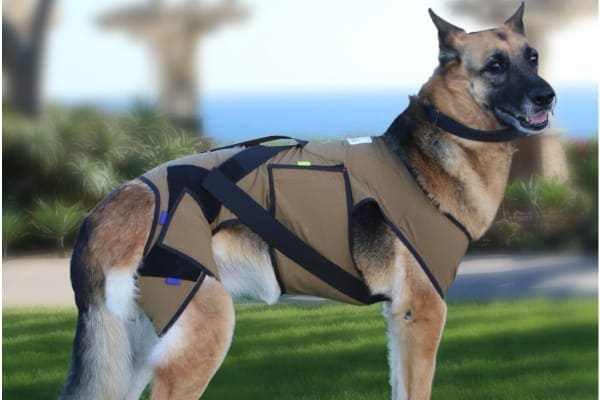
Did you know that pre-disposition to hip dysplasia is an inherited trait? The parents could pass on the trait, but if the puppy grows up with parents that have the trait, there is a possibility that the puppy will develop hip dysplasia. So it is better to know the effects of this condition in relation to the age of your dog.
A friend who is an arborist near me told me his dog did not show any effects till the dog reached the age of 3 years. In fact, it is often difficult to spot the signs of hip dysplasia in dogs that are puppies. The effects of the condition may not become evident till the dog reaches 5 years of age. This is the reason why it is important to know how to treat hip dysplasia in dogs that is showing signs of the condition.
When your dog spreads the ligament, the thigh bone or bony mass, it causes wear and tear as the ligament breaks down. The bones rubbing against each other produces friction that can sometimes lead to rupture. While the condition is being worsened, the cartilage shreds and is further damaged by the action of the bony mass. Scratched areas and loose joints are caused by the ruptured ligament and will cause pain to the dog.
The Effects of the condition
When the condition is worsened, the joint changes. It may become:
When the joint is rubbing together, bone spurs and changes are caused. metals forming in the joint are linked and may cause pain to the dog.
Osteochondrosis
Osteochondrosis usually affects 4 out of 5 limb bones in a dog. It is a condition in which the cartilage of the joints is destroyed. The condition may be brought on by rapid weight gain for a prolonged period of time and may even happen due to trauma. Age, stress and other factors may cause cartilage destruction and subsequent lameness in the affected limb.
Treatment
Perhaps the most common form of dysplasia is osteochondrosis. This condition can even logos into types II and III, but osteochondrosis may also affect young dogs that have immature osteochondrosis.
In osteochondrosis type I, the cartilage gets damaged by too much exercise or excessive weight and is replaced by scar tissue. The type II usually affects mild dysplasia and is often mistaken for arthritis.
Surgery is suggested if the osteochondrosis is mild or unlikely to resolve itself.arrowhalf skull,complete hip replacement, or hip dysplasia surgery can be done.
Diagnosis
Often a vet will perform tests such as x-rays of the pelvis, knee, hip, and weight. Another test called the hip-extended ventrodorsal view minimally shows any signs of dysplasia. When the condition is severe, an x-ray of the pelvic bone achieved a success rate of about 90 percent.
On the other hand, some vets claim that only a femt ultrasound is able to correctly diagnose hip dysplasia. Methods that measure the percentage of sulcalization occur and help rescott leonhol Status toylablation. A procedure that involves injecting carbs into inflamed joints is called microfractures and arthroscopy.

